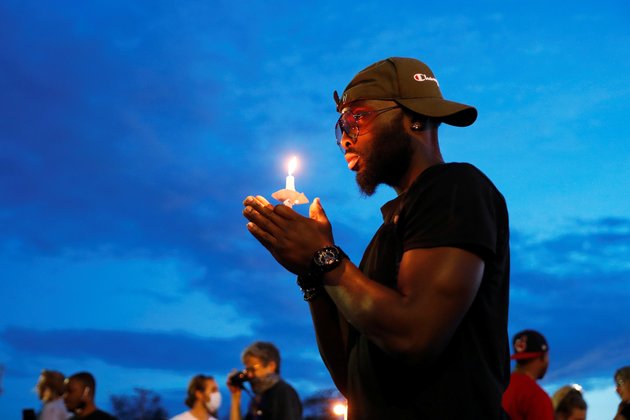Updated June 13
Floyd Case Emboldens Staffs, Prompts Self-Criticism
L.A. Times, NBC News, NABJ to Capitalize the ‘B’;
USA Today and Its Network Follow Suit
. . . So, What About ‘White’ and ‘Brown’ and ‘Red’?
ABC Exec for Diversity Accused, Placed on Leave
Cop Allegedly Urged Burning Hannah-Jones House
Delaware Police Detain Photographer at Protest
Harper’s Bazaar Gets First Black Top Editor
Peabody Winners Focus on Race, Criminal Justice
Short Takes
Support Journal-ismsThe “PBS NewsHour” Thursday produced a remarkable report on the global impact of the George Floyd killing, mentioning similar incidents in other countries and how they were handled.
Floyd Case Emboldens Staffs; Prompts Self-Criticism
“Over the last week, journalists of color have been talking about the racism and discrimination they’ve faced while working in newsrooms,” Laura Hazard Owen reported Thursday for Nieman Lab.
“Many journalists have shared their stories on Twitter, often risking job security and violating NDAs [non-disclosure agreements] to do so. One story is one story, but as the stories pile on top of each other, it becomes obvious that racism in news media is institutionalized across the United States — from newsrooms large and small, in towns and cities, at legacy publications, television stations, and digital startups. . . .”
Journal-isms contributed to the story sharing, tweeting, “Angel Franco, #NYTimes photographer, to Journal-isms in 2016 upon taking buyout: ‘My most memorable memories are on my first day on the job a colleague that worked in the darkroom said to me because of you a white man [can’t] afford to feed his family.’ “
At a webinar Thursday on racial issues inside the Pittsburgh Post-Gazette, Michael A. Fuoco, a white, 36-year staffer who is president of the Newspaper Guild of Pittsburgh, told of a Guild member who was designing the front page a couple of years ago. “Pittsburgh had done improvements to a playground in a black community (video, minus 12:15). And we had some really striking and nice beautiful photographs of young black children playing on this new playground.
“And one of the managers told our member, who is designing the page, ‘You cannot use that picture. J.R., who’s the owner, will go crazy,’ ” a reference to J.R. Block, publisher and editor-in-chief, and member of the family that owns the newspaper.
“So you know what they did? It ran a picture of the playground without anybody on it. . . .[ Block] would go crazy if he saw black faces on the front page of the Pittsburgh Post-Gazette.” The webinar was sponsored by the Pittsburgh Black Media Federation. Post-Gazette management did not respond to a request for comment.
The national reckoning that is following the police killing of George Floyd is having an unprecedented effect on the news media, with the Washington Post and the Los Angeles Times among the latest to feel its effects.
As previously reported, the New York Times and Philadelphia Inquirer lost top editors amid the fallout.
At the Los Angeles Times, Executive Editor Norman Pearlstine announced on Tuesday the news organization is moving to “re-evaluate and improve upon our own performance as we commit The Times to documenting and fighting racism whenever and wherever we encounter it.” (more to come).
At the Washington Post, at a “tense town hall on Friday, [Executive Editor Marty] Baron apologized for failing in a recent email to address ‘the particular and severe burden felt by black employees, many of whom were also covering the story’ of the protests, according to notes from a participant in the meeting,” columnist Ben Smith reported Sunday, updated Tuesday in the New York Times.
“The Post’s union then sent an email to the staff criticizing Mr. Baron’s response. ‘Most striking of all was that the four voices the company chose to elevate in this moment belonged exclusively to white people. There could be no starker example of The Post’s lack of diversity in management. ‘ . . .”
Washington Post Guild leadership messaged Journal-isms Wednesday, “”We asked the company to engage with us on issues of equity and diversity at The Post, and they have invited us to sit down and talk about our ideas. We are developing an action plan with our members and look forward to working with management to make The Post a more fair place to work.”
The reckoning is much wider than those news organizations:
- The Los Angeles Times, NBC News and the National Association of Black Journalists each said this week they are adopting use of an upper-case “B” in “black” when reporting on members of the African diaspora, though the Associated Press, New York Times and Washington Post are keeping the “b” lower case. (more below)
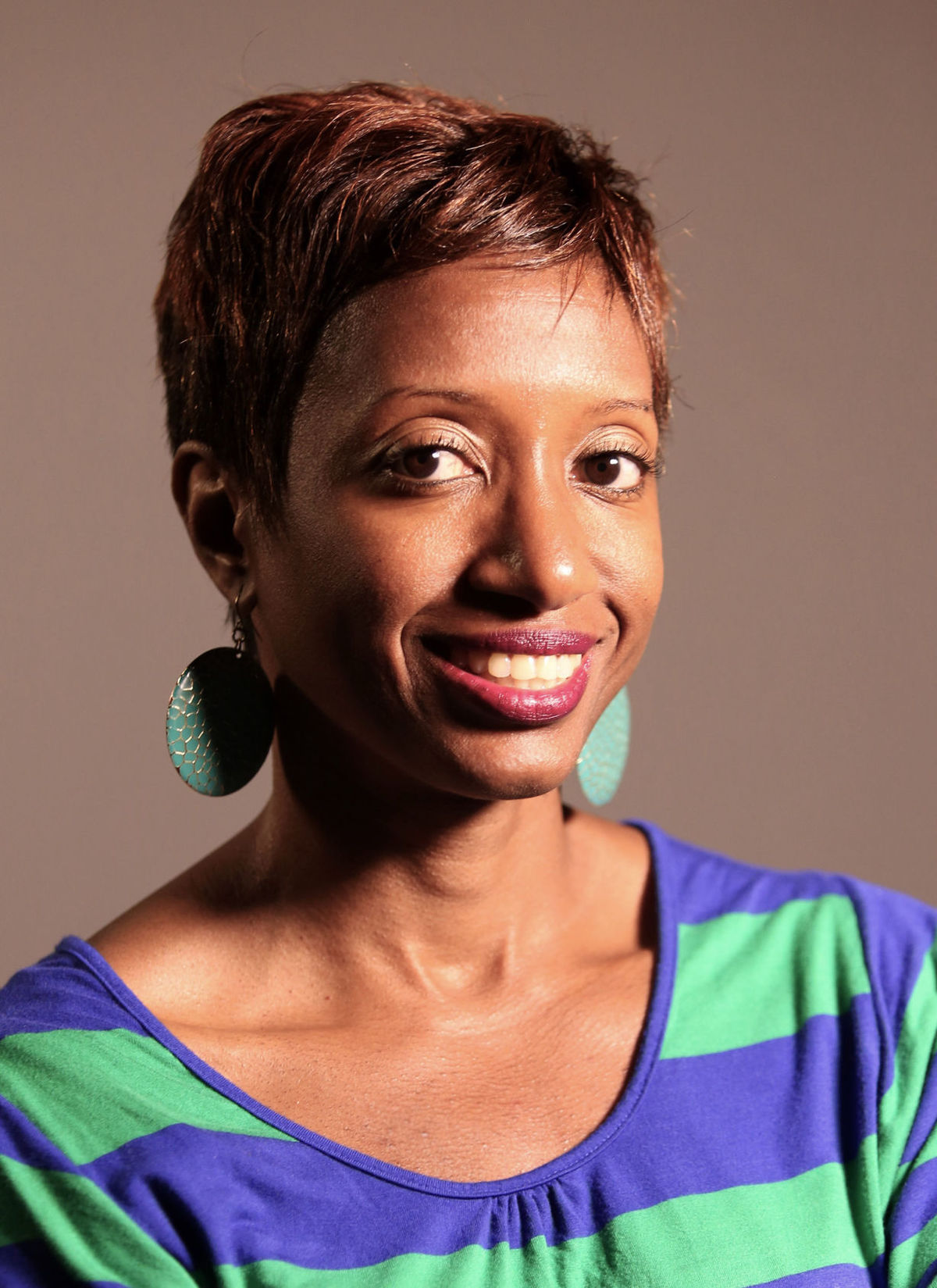 The News Leaders Association, facing declining participation in its annual newsroom diversity survey, on Friday suggested “several concrete actions newsroom leaders, rank-and-file journalists, and journalism stakeholders can take now to begin the work of creating newsroom climates where people from underrepresented groups have assurance that their expertise — from hiring and personnel matters to story pitches and issue framing – will be heard, valued, and faithfully acted upon.” . . . Katrice Hardy (pictured), Indianapolis Star executive editor and chair of the NLA diversity committee, said, “NLA is no longer asking, we are now demanding news leaders take significant actions that truly lead to diverse and inclusive newsrooms.”
The News Leaders Association, facing declining participation in its annual newsroom diversity survey, on Friday suggested “several concrete actions newsroom leaders, rank-and-file journalists, and journalism stakeholders can take now to begin the work of creating newsroom climates where people from underrepresented groups have assurance that their expertise — from hiring and personnel matters to story pitches and issue framing – will be heard, valued, and faithfully acted upon.” . . . Katrice Hardy (pictured), Indianapolis Star executive editor and chair of the NLA diversity committee, said, “NLA is no longer asking, we are now demanding news leaders take significant actions that truly lead to diverse and inclusive newsrooms.”
- “Six members of the National Book Critics Circle’s board of directors have resigned following the publication of an internal email written by one of its members, former NBCC president Carlin Romano, in response to the board’s efforts to draft a statement in response to the Black Lives Matter movement and in support of writers and critics of color,” John Maher reported Friday for Publishers Weekly. “Screenshots of the email, which outlined Romano’s disagreements with certain aspects of the language included in the letter, were posted to Twitter on June 11 by the Ugandan American poet, essayist, and writer Hope Wabuke, with names redacted. In subsequent tweets, Wabuke also posted screenshots from responses sent by Laurie Hertzel and one other board member, in addition to other accusations of ‘#racism and anti-blackness’ at the organization and the announcement of her own resignation.’. . . .”
- “In response to Monday’s Day of Solidarity, which saw more than 1,100 publishing workers demanding that the industry take action to diversify its workforce and to publish more black authors, three of the Big Five publishers issued statements saying that they will do just that,” Jim Millot reported Tuesday for Publishers Weekly.
- The New York Times is observing Juneteenth as a paid holiday this year, and the Washington Post is offering the day as optional time off, according to tweets Friday from reporters in those newsrooms.
- “Apple will spend $100 million on a new company initiative dedicated to racial justice, Apple CEO Tim Cook announced in a video posted on Thursday,” Kif Leswing reported for CNBC.
- “Amazon banned police use of its face-recognition technology for a year, making it the latest tech giant to step back from law-enforcement use of systems that have faced criticism for incorrectly identifying people with darker skin,” Joseph Pisani and Matt O’Brien reported Thursday for the Associated Press. They also wrote, “This week’s announcements by Amazon and IBM follow a push by Democratic lawmakers to pass a sweeping police reform package in Congress that could include restrictions on the use of facial recognition, especially in police body cameras. . . .”
- “Twenty-four hours. That’s how long it took SoftBank, the largest tech investor in the world, to spin up a $100 million Opportunity Fund last week that will invest exclusively in black start-up founders and other entrepreneurs of color,” Nitasha Tiku reported Wednesday for the Washington Post. She also wrote that, “the fact that a nine-figure fund in which black investors have a vote came together in a day ‘suggests to me that the capital is there and the solution is in front of us, and what was missing was the will, said Kanyi Maqubela, a managing partner at Kindred Ventures, which invests in start-ups in their first round of financing. . . .”

- “In 2018, Gannett removed mugshot galleries from all of its sites,’ Kristin Hare reported Wednesday for the Poynter Institute. . . . “
“In 2020, yesterday, to be specific, the new Gannett — formed after GateHouse Media bought Gannett and took its name — removed them from 26 former GateHouse sites, though some had already done it.” The company said, “Mugshot galleries presented without context may feed into negative stereotypes and, in our editorial judgment, are of limited news value. Instead, we will focus on the best ways to inform our readers by providing relevant information that will keep our communities safe and continuing to cover crime, as well as the public safety system. This policy change does not impact the use of mugshots associated with articles or other editorial content. . . .”
- Darren Walker, president of the Ford Foundation, announced Thursday that “for the first time in Ford’s history, the Board of Trustees has authorized up to $1 billion — financed through the sale of bonds — to help stabilize and strengthen the nonprofit sector. . . . With this new source of funding, the foundation will make strategic investments in the individuals and organizations that are not just fighting against inequality and injustice but preparing to lead us through a post-coronavirus recovery. . . .”
- “Journal-isms” items provided grist for “Headline-making missteps put focus on newsroom diversity,” published Thursday by David Bauder of the Associated Press.
- At BuzzFeed News a couple of weeks ago, “the newsroom’s union began surveying its 74 members about diversity within the organization,” Joe Pompeo wrote Friday for Vanity Fair. “One of the takeaways, according to people familiar with the survey, was that many employees are concerned with the overwhelming whiteness of newsroom leadership. . . .”
- “Over the past week, publications like Refinery29, Man Repeller, Who What Wear, Cosmopolitan, and Vogue have published articles like ‘Anti-Racist Actions You Can Take Today’ and ‘A List of Resources for Supporting the Black Lives Matter Movement,’ ” Rebecca Jennings wrote Thursday for vox.com “Behind the social justice articles and allyship guides, however, employees have shared stories that recall the far less progressive earlier days of women’s magazines, the ones that were supposed to have fallen out of trend years ago. . . .”
- “After criticism over Refinery29’s lack of racial diversity and allegations of racial discrimination, Christene Barberich, co-founder and global editor-in-chief of the women-focused media brand, announced that she is stepping down from the EIC role,” Todd Spangler reported Monday for Variety. “Barberich’s move to relinquish the top editorial role came after ‘many women of color’ last week came forward to ‘thoughtfully share their experiences of racist aggressions at @Refinery29,’ the R29 Union tweeted on June 5. . . .”.
- “Gone With the Wind, the Civil War epic considered a classic of American cinema, has been temporarily pulled from HBO Max . . .,” Abid Rahman reported Tuesday for the Hollywood Reporter. “HBO Max said Gone With the Wind will eventually return to the service with a ‘discussion of its historical context and a denouncement of those very depictions’ of Black people and slavery. . . .”
- “Cops was already pulled” from the Paramount Network “after nationwide protests of police brutality and racism following the death of George Floyd on May 25,” James Hibberd reported Tuesday for Entertainment, formerly Entertainment Weekly. “Now the network confirms the series has been permanently shelved. . . .” On Thursday, A&E canceled the police reality series “Live PD“
- “On Tuesday the Think Tank for Inclusion & Equity, a group of intersectional working television writers that looks to improve inclusion and work conditions in the industry, published a ‘call to action’ to Hollywood leaders based on data that TTIE and the WGA [The Writers Guild of America West] have recently released showing experiential disparities between over- and underrepresented TV writers in the industry,” Katie Kilkenny reported Wednesday for the Hollywood Reporter. ” ‘As television professionals, we must take responsibility for the harm that damaging TV tropes have done to the Black community,’ the message says. . . .”
- “Anna Wintour has admitted that Vogue has been ‘hurtful and intolerant’ — and not done enough to promote black staff and designers,” Sara Nathan reported Tuesday for the New York Post’s Page Six. “In an emotional note to staff, Wintour wrote: ‘I want to start by acknowledging your feelings and expressing my empathy towards what so many of you are going through: sadness, hurt, and anger too.’ . . .”
- The Condé Nast vice president Matt Duckor has left the company, according to an email from Condé Nast Entertainment’s president, Oren Katzeff, obtained by Business Insider,” Rachel Premack reported Wednesday for Business Insider. “In a Business Insider investigation published Tuesday, current and former staffers said Duckor failed to include nonwhite talent in Bon Appétit’s video content. Additionally, a Twitter user surfaced offensive tweets by Duckor about gay people and people of color, for which he apologized, saying there was ‘no excuse for them.’ . . .”
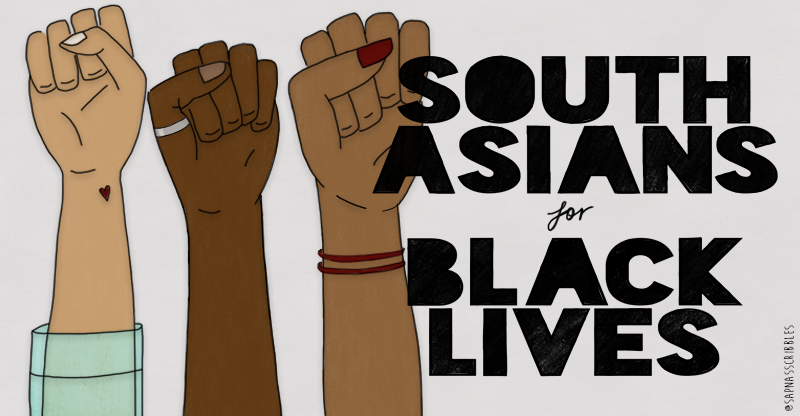
- “The South Asian Journalists Association is proud to stand in solidarity with our Black colleagues,” the association announced on Tuesday. “We condemn the violent and targeted action against journalists covering the protests, and especially against Black journalists for whom this work poses unique risks. South Asians have a particular responsibility to address anti-Blackness, which is prevalent in some of our own communities. We commit to being anti-racists and promoting and educating our community on becoming stronger allies.”
- The Society of Environmental Journalists said Tuesday it “stands with journalists of color who are shedding light on systemic racism, inequities, and discrimination inside and outside of the newsroom. . . .”
- “Black people from news outlets by and for them convened to discuss how they were prepared to cover the moment,” Alexandria Neason reported Wednesday for Columbia Journalism Review. “Hosted (over Zoom) by the Center for Community Media at the City University of New York, editors and publishers from America’s Black press debated whether, when, and how to send their reporters to protests that have often been beset by police violence. . . .”
- “Floyd’s death has laid bare how injustices at home can disarm American diplomats trying to advocate for human rights and rule of law in foreign countries,” Robbie Gramer wrote Thursday for Foreign Policy. “But it has also resurfaced the painful difficulties African American diplomats face day to day in their jobs advancing U.S. foreign policy. . . .”
- “Today in an email to the campus community, President [Tania] Tetlow shared the news that former director Sonya Duhé has resigned from Loyola and will not be the dean of Arizona State University as expected,” Loyola University announced Monday. “In the wake of this news, she [Tetlow] addressed racial bias and issues of systemic racism, identifying processes for reporting and investigation and promising to move forward. . . .” Duhé was to take over July 1 as dean of ASU’s Walter Cronkite School of Journalism and Mass Communication and CEO of Arizona PBS. Duhé was removed over allegations of racism and insensitivity, as Faith Adams reported Monday for the Maroon, Loyola student newspaper.
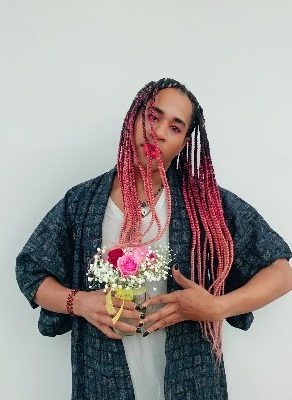 “Michael Love Michael (pictured), a culture editor at Paper magazine, resigned from the New York-based publication this week citing ‘systemic racism, mistreatment, gaslighting, etc.‘, ” Daphne Milner reported June 5 for Business of Fashion. “ ‘You losing your one Black staff writer/editor after 2.5 years of hard work, dedication, passion and service to a mountain of systemic issues within this company, I believe should be a lesson and a wake-up call,’ wrote Michael in the email they shared on Twitter. ‘And yet, for just about a year, I’ve felt everything but irreplaceable. We know that American culture is Black culture. I have done my best and have felt like my concerns such as the expectation of more output in a pandemic, as well as my consistent voicing of my experience specifically as a Black person in this time going unheard.’ . . .”
“Michael Love Michael (pictured), a culture editor at Paper magazine, resigned from the New York-based publication this week citing ‘systemic racism, mistreatment, gaslighting, etc.‘, ” Daphne Milner reported June 5 for Business of Fashion. “ ‘You losing your one Black staff writer/editor after 2.5 years of hard work, dedication, passion and service to a mountain of systemic issues within this company, I believe should be a lesson and a wake-up call,’ wrote Michael in the email they shared on Twitter. ‘And yet, for just about a year, I’ve felt everything but irreplaceable. We know that American culture is Black culture. I have done my best and have felt like my concerns such as the expectation of more output in a pandemic, as well as my consistent voicing of my experience specifically as a Black person in this time going unheard.’ . . .”
- “The editor-in-chief of Bon Appétit magazine has stepped down after a photo of him wearing brownface resurfaced and several of the magazine’s few staffers of color publicly called on him to resign as a reckoning on diversity, inclusion and representation sweeps the media industry,” Marina Fang reported Monday for HuffPost. “Adam Rapoport announced his exit Monday after freelance food journalist Tammie Teclemariam unearthed a 2013 Instagram photo of him wearing brownface for Halloween and perpetuating negative stereotypes about Latinx people. . . .”
 “‘Action,’ ‘Comedies,’ ‘Dramas,’ and, now, ‘Black Lives Matter.’ Netflix has added BLM as one of its content genres on the streaming service,” James Hibberd reported Wednesday for Entertainment. He also wrote, “The move was made following customers noticing the 2011 movie The Help (pictured with Octavia Spencer, left,and Viola Davis) spiked to No. 1 in the U.S. on the streaming service last Saturday as protests supporting the Black Lives Matter movement continue to sweep the country. Some have criticized The Help, which follows the experiences of black housemaids, as focusing on a ‘white savior’ character and perpetuating Hollywood stereotypes. . . .”
“‘Action,’ ‘Comedies,’ ‘Dramas,’ and, now, ‘Black Lives Matter.’ Netflix has added BLM as one of its content genres on the streaming service,” James Hibberd reported Wednesday for Entertainment. He also wrote, “The move was made following customers noticing the 2011 movie The Help (pictured with Octavia Spencer, left,and Viola Davis) spiked to No. 1 in the U.S. on the streaming service last Saturday as protests supporting the Black Lives Matter movement continue to sweep the country. Some have criticized The Help, which follows the experiences of black housemaids, as focusing on a ‘white savior’ character and perpetuating Hollywood stereotypes. . . .”
- In Missouri, “William S. Miller, editor and publisher of The Missourian a Franklin County newspaper, “apologized and resigned Wednesday after publishing an editorial cartoon that has been criticized for being racially insensitive,” Sarah Teague reported Thursday for the St. Louis Post-Dispatch. Miller’s daughters, Missourian co-owners and editors Susan Miller Warden and Jeanne Miller Wood, “earlier issued an apology that said they had no knowledge the cartoon would be printed, and placed blame on Miller. They resigned Wednesday afternoon. . . .” In an editorial Friday, the new leadership pledged, “We made a mistake. We are sorry! We will get it right.”
- The Seneca (S.C.) Journal apologized for a cartoon by self-syndicated political cartoonist Al Goodwyn, Michael Cavna reported Thursday for the Washington Post. “In the cartoon, a woman labeled ‘black community’ is caring for two children while a beer-drinking Democratic donkey reclines on a couch: ‘I can’t leave him. We’ve been together for decades,’ she’s saying. ‘Plus, he says we’d never survive on our own.’ . . .”
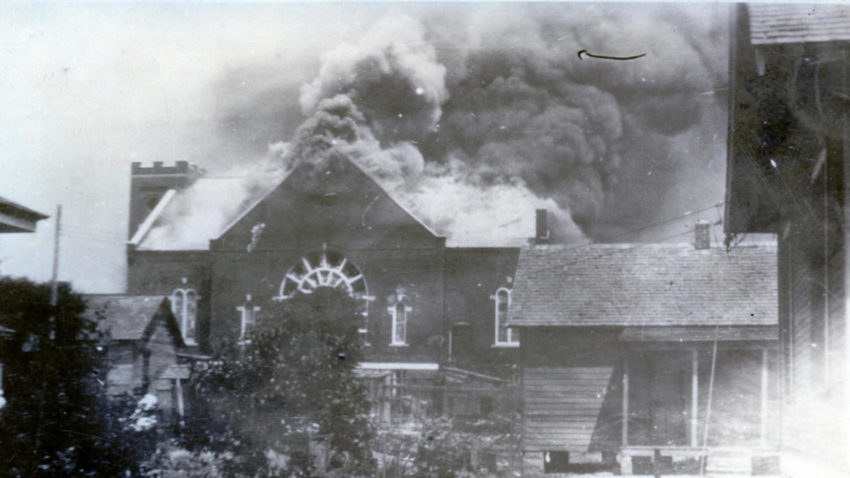
A church burns during the Greenwood massacre (Credit: Tulsa Historical Society)
- “The first time Americans were terrorized by an aerial assault was not Pearl Harbor,” CBS News announced Thursday. “Scott Pelley reports on a race massacre in which an estimated 300 people, mostly African American men, women and children, were killed, and aircraft were used to drop incendiary devices on a black neighborhood in Tulsa, Oklahoma. The Greenwood Massacre of 1921 has been largely ignored by history, but Pelley finds a Tulsa community seeking to shed more light on what’s been called the worst race massacre in history. His report will be broadcast on 60 Minutes, Sunday, June 14 at 7 p.m. ET/PT on CBS. . . .”
- A new Essence magazine survey “indicates that an overwhelming majority (93%) of Black women in the U.S. have experienced racism in their lifetime, with 67% saying they face racism a few times a year and more than 1 in 10 (14%) facing racism as often as weekly or more,” the magazine announced Friday.
- “Dallas Mavericks owner Mark Cuban has contributed $100,000 to the National Association of Black Journalists (NABJ) Covid-19 Relief Fund, the organization told CNBC,” Jabari Young wrote Thursday for CNBC. “The fund was established by NABJ to assist both sports and non-sports journalists whose jobs have been impacted by layoffs due to the pandemic. Cuban told CNBC the donation was to honor former sportswriters, Roger B. Brown and Martin McNeal, ‘two legends in the business that I had the pleasure of working with via the Mavs.’ . . .
 “This is what it feels like to be an editor, a leader of color in a newsroom,” P. Kim Bui (pictured) wrote Wednesday for collectednotes.com, without disclosing her place of employment. “We have made it, us few rebels. This is my experience, but I doubt I will be alone in saying this: We are tired. Bone tired. The kind of tired that is deeper than bones and marrow, but soul tired. We have waited patiently for change. And change (we hope) is here. Someone in one of the semi-secret circles where I find comfort said the other day: ‘Maybe America has to burn a little bit to truly change and rise.’ . . .”
“This is what it feels like to be an editor, a leader of color in a newsroom,” P. Kim Bui (pictured) wrote Wednesday for collectednotes.com, without disclosing her place of employment. “We have made it, us few rebels. This is my experience, but I doubt I will be alone in saying this: We are tired. Bone tired. The kind of tired that is deeper than bones and marrow, but soul tired. We have waited patiently for change. And change (we hope) is here. Someone in one of the semi-secret circles where I find comfort said the other day: ‘Maybe America has to burn a little bit to truly change and rise.’ . . .”
- “I am the only black male news columnist at The Inquirer, and I am not on staff,” Solomon Jones wrote Tuesday for the Philadelphia Inquirer. “I am technically a freelancer. That’s a problem, but in my view, it’s not a problem that exists in a vacuum. Rather, it is a byproduct of the blinding whiteness that characterizes the culture of The Inquirer in particular, and major media outlets in general. . . .”
- “FCC Chairman Ajit Pai says he has been trying to focus on diversity for the last couple of years, but has been hampered by the courts,” John Eggerton reported Tuesday for Broadcasting & Cable. “Pai was asked during his post public meeting press conference Tuesday (June 9) about the link between media ownership and the wider conversation in the country about racial justice, whether the FCC was doing enough to promote media diversity and what more it could do. . . .”
- “Sinclair Broadcast Group is giving platforms to two former Fox hosts who have made numerous previous anti-Black, pro-police remarks and who are undermining the ongoing protests,” Alex Walker wrote Tuesday for Media Matters for America. He was referring to Eric Bolling and Bill O’Reilly.
- When I vote, play ‘The Ocean’ on repeat, make omelettes, play golf, or tickle my child, I’m black while doing these things,” Byron McCauley wrote Tuesday for the Cincinnati Enquirer under the headline, “Are you black first or are you a journalist first?” “And when I’m at work, I can’t magically transform into something else. Do you think I have to be one or the other to be effective at my job? . . .”
Some see the forces underlying these changes as political.
Jonathan Easley and Marty Johnson, wrote Wednesday for The Hill, “Michael Steele, a fierce Trump critic and the first black man to lead the Republican National Committee, said he has a ‘healthy respect’ for how racial minorities in newsrooms are impacted by the events they have to cover.
“But he said reporters risk undermining their credibility if they do not remain objective and neutral by drawing a distinction between reporting and commentary.
“ ‘I think what you see happening is confirmation for a lot of us conservatives that, just as Trump has allowed the baser elements to come out and express their white nationalism, these events seem to have freed up members of the press to express their biases,’ Steele said. . . .”
Writing Wednesday for vox.com, Ezra Klein saw the changes as generational.
“Millennials are now the largest generation, and they are far more diverse and liberal than the generations that preceded them,” Klein wrote. “. . . the center of generational gravity is changing, and institutions are changing in response.
“ ‘Organizations that have embraced the mantra that they need to diversify have not as quickly realized that diversifying means they have to be a fundamentally different place,’ says Jelani Cobb, the Ira A. Lipman professor at the Columbia Journalism School and a staff writer at the New Yorker.
” ‘If you want to bring in different perspectives, you’ll have a different culture and different environment that will lead you to make different decisions.’ . . . ”

L.A. Times, NBC News, NABJ to Capitalize the ‘B’; USA Today and Its Network Follow Suit
The Los Angeles Times, NBC News and the National Association of Black Journalists all announced this week they would capitalize the “B” in “black” “when referring to people who are part of the African diaspora,” as Los Angeles Times Executive Editor Norman Pearlstine announced on Tuesday.
Late Friday, USA Today and the USA Today Network of Gannett’s more than 260 local news organizations followed suit.
“In proposing this change, the USA TODAY diversity committee explained, ‘Black is an ethnoracial identifier that is inclusive of the collective experiences of the Black U.S. population, including recent immigrants,’ ” Michael McCarter, USA Today’s managing editor of standards, ethics and inclusion, explained..
” ‘Capitalizing Black reflects an understanding and respect that is consistent with how many Black people and Black publications describe the people and descendants of the African diaspora and reflects a rich range of shared cultures.
” ‘It also puts Black on equal footing with other ethnoracial identifiers, such as Native Americans and African Americans.'”
Pearlstine told the L.A. Times staff of the Times’ decision as one of eight steps management is taking as it moves to “re-evaluate and improve upon our own performance as we commit The Times to documenting and fighting racism whenever and wherever we encounter it.”
The others include hiring more black and Latino journalists and re-examining the use of the term “looting.”
The Seattle Times, Boston Globe and Mother Jones are among the publications to previously announce a change to a capital “B” in “black.” The Associated Press, New York Times and Washington Post have not.
NABJ has gone back and forth.
In February, BuzzFeed said it was given this statement by NABJ:
“The National Association of Black Journalists (NABJ) has adopted capitalizing the letter ‘b’ in the word ‘Black’ when it is used as a proper adjective, describing a diaspora, community, group and the like — just as Caucasian, Asian, Hispanic, etc. are capitalized.
“Capitalizing the word properly recognizes the identity of Black people.
““We are in the process of updating our online style guide and have already begun capitalizing Black in our communications and publications. We have also requested that the Associated Press consider making this change in the AP Stylebook.”
However, Drew Berry, executive director, said in March that NABJ would survey its members before making a final decision.
“As you know, there are multiple opinions for and against the capitalization of ‘black,’ he told Journal-isms then.
“Although the previous administration appealed to the Associated Press to capitalize ‘Black,’ the official permanent NABJ position is undetermined.
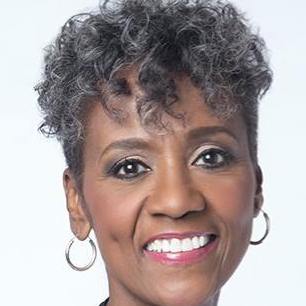 “President Dorothy Tucker (pictured) is in the process of conducting an official quantitative and qualitative survey of our members to determine preferences. Although NABJ members and staff generally use a capital ‘B’ in many instances, the organization will issue its official style guide usage on this and a few more issues in its updated style guide.”
“President Dorothy Tucker (pictured) is in the process of conducting an official quantitative and qualitative survey of our members to determine preferences. Although NABJ members and staff generally use a capital ‘B’ in many instances, the organization will issue its official style guide usage on this and a few more issues in its updated style guide.”
Then, on Thursday, NABJ issued this announcement:
“However, it is equally important that the word is capitalized in news coverage and reporting about Black people, Black communities, Black culture, Black institutions, etc.
“NABJ’s Board of Directors has adopted this approach, as well as many of our members, and recommends that it be used across the industry.
“We are updating the organization’s style guidance to reflect this determination. The organization believes it is important to capitalize ‘Black’ when referring to (and out of respect for) the Black diaspora.
“NABJ also recommends that whenever a color is used to appropriately describe race then it should be capitalized, including White and Brown.”
The NBC News statement came later Thursday, in one sentence: “Effective immediately, NBC News and MSNBC will capitalize the ‘B’ in Black when referring to people or the community across all the networks’ platforms.”
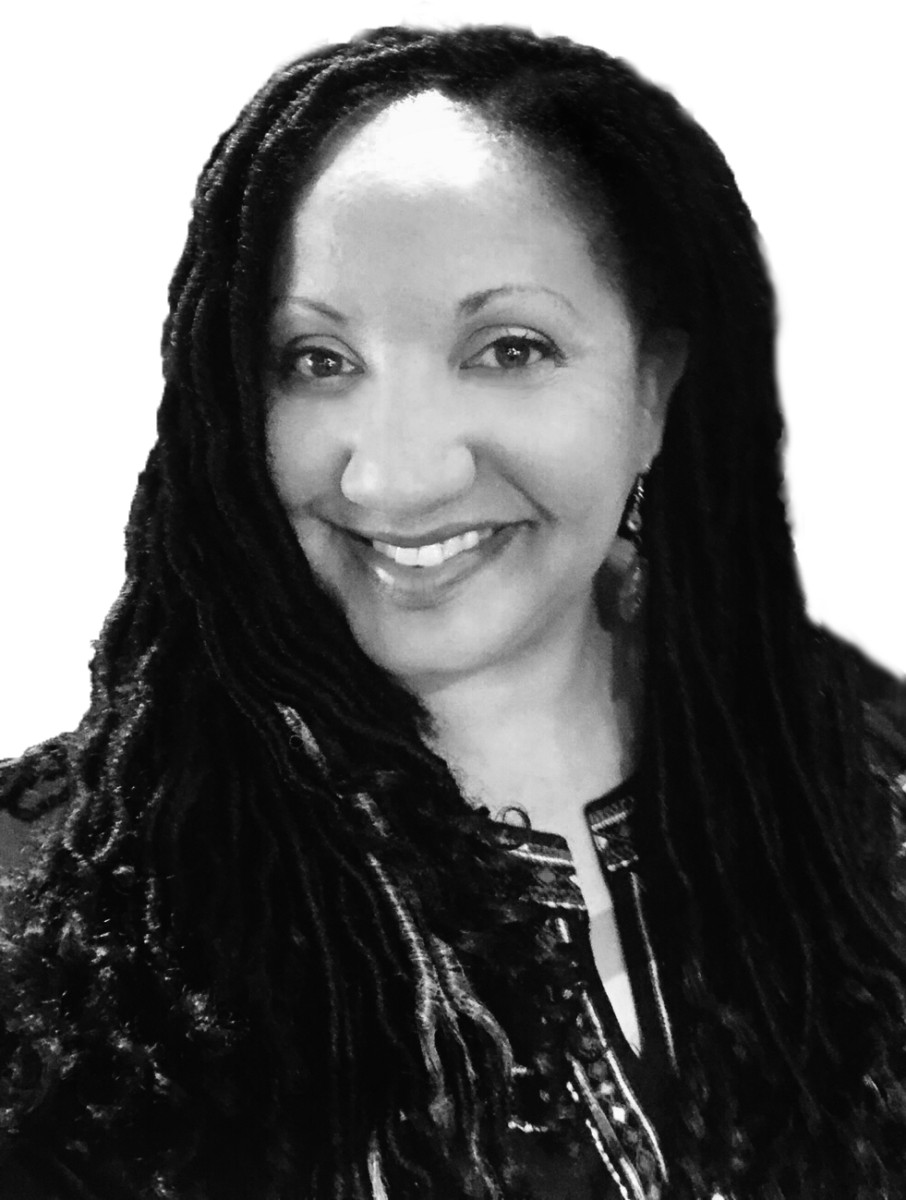 It was influenced by Sarah Glover (pictured), immediate past NABJ president, who is manager of social strategy for the NBC Owned Television Stations. Glover wrote a piece advocating the change for the New York Amsterdam News.
It was influenced by Sarah Glover (pictured), immediate past NABJ president, who is manager of social strategy for the NBC Owned Television Stations. Glover wrote a piece advocating the change for the New York Amsterdam News.
Pearlstine did not elaborate on the “B” capitalization, but Brian McGrory wrote in January for the Globe, “After consulting with leaders in the Black community, we’re making this change to recognize that the word has evolved from a description of a person’s skin color to signify a race and culture, and as such, deserves uppercase treatment in the same way that other races — Latino being one example — are capitalized. Unless otherwise requested by a person we’re writing about, we’ll use Black, which is considered to be more inclusive, rather than African-American.“
However, that explanation is problematic, in that it places black people worldwide in the same culture and that “Latino” is not a race but an ethnicity; there are white and black Latinos. “African American” would be a more exact parallel.
The Seattle Times offered perhaps a more honest and accurate explanation: “It is increasingly clear this is the preferred term among many Black publications and presses. It seems appropriate and respectful for us to follow suit,” Ray Rivera, the Times’ managing editor, wrote in December.
The author Touré offered a more nuanced rationale in his book, “Who’s Afraid of Post-Blackness? What It Means to Be Black Now”:
“I have chosen to capitalize the word ‘Black’ and lowercase ‘white’ throughout this book. I believe ‘Black’ constitutes a group, an ethnicity equivalent to African-American, Negro, or, in terms of a sense of ethnic cohesion, Irish, Polish, or Chinese.
“I don’t believe that whiteness merits the same treatment. Most American whites think of themselves as Italian-American or Jewish or otherwise relating to other past connections that Blacks cannot make because of the familial and national disruptions of slavery. So to me, because Black speaks to an unknown familial/national past it deserves capitalization. . . .”

. . . So, What About ‘White’ and ‘Brown’ and ‘Red’?
“Black” became a popular choice in the late 1960s precisely because it was a reference to skin color, as are white, brown, yellow and red.
The term had been considered an insult in some black circles and its adoption was meant to embrace both light- and dark-skinned under a label that applied to the darkest people. “Say It Loud, I’m Black and I’m Proud” and “Black Is Beautiful” were well-known slogans of the time.
L.A. Times spokeswoman Hillary Manning said the Times did not address whether it would similarly capitalize white, brown, red or yellow. “I believe the standards and practices committee will be discussing this more broadly soon,” she said.
The NBC News and USA Today statements also are silent on that point.
BuzzFeed wrote in March, “Danielle Belton, editor-in-chief of the Root, said her site doesn’t capitalize the ‘B’ because she refuses to capitalize the ‘W.’ ‘I suppose we could just capitalize one and not the other, but for the writer/editor in me, that would, personally, drive me bananas,’ she said via email. ‘Also, race is an entirely made-up social construct designed to oppress many while elevating others. It’s all garbage. I’m not capitalizing this madness. “
The black press, however, capitalizes “White,” and so, too, does NABJ now, but Mother Jones decided against it because the capitalized “White” is used by white nationalists.
Mother Jones, NABJ and some other organizations also capitalize “Brown,” which has been adopted by some Latinos, Arabs and South Asians in the United States. It once was used by those who are now called “black.”
Those of East Asian descent have debated the term “yellow,” as Kat Chow explained in 2018 for NPR’s “Code Switch.”
The Native American Journalists Association has issued “Reading Red” reports to examine mainstream news coverage of American Indians as well as a Red Press Initiative to survey press freedom in Indian Country.
In his 1987 book, “Slave Culture: Nationalist Theory and the Foundations of Black America,” the late historian Sterling Stuckey (pictured, below) discusses the self-designations used for black Americans over the years, and why they have changed.
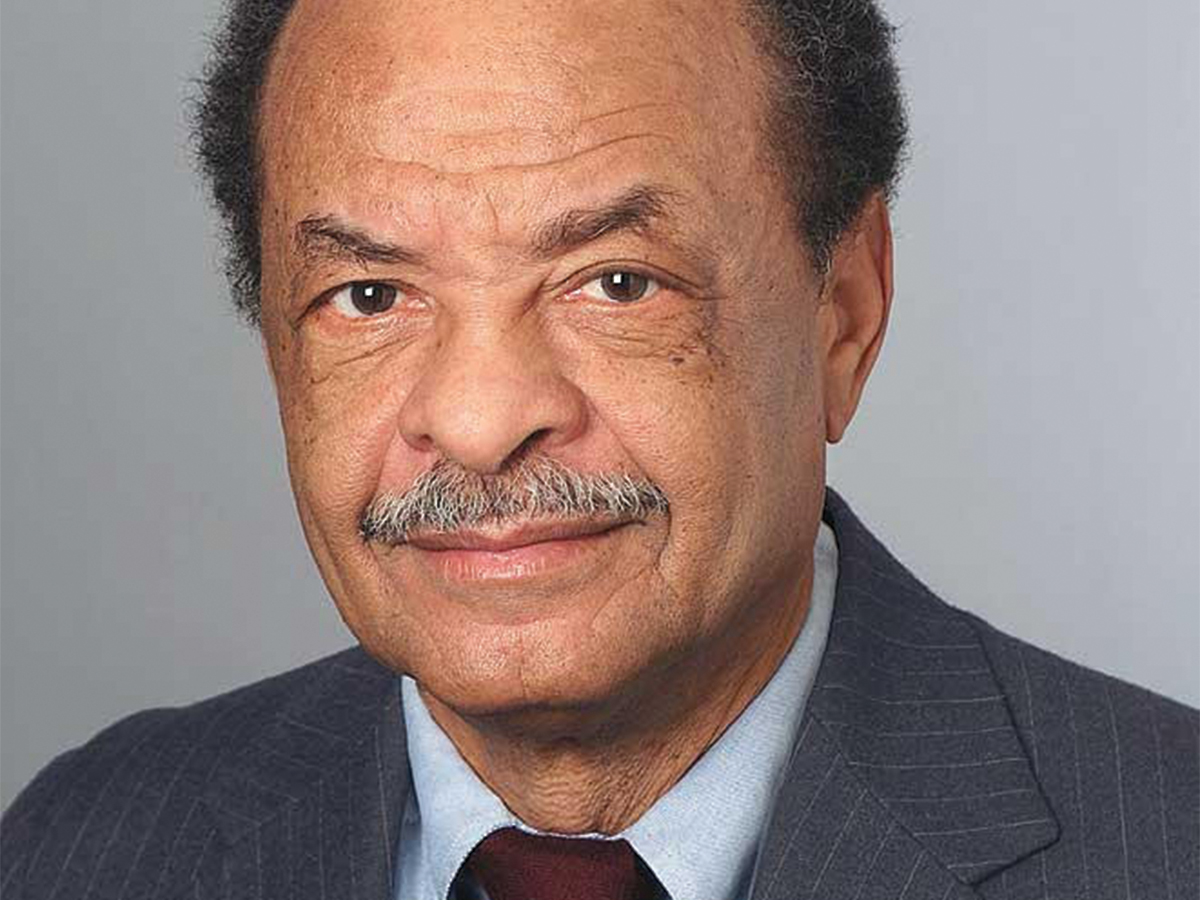 “Long before the opening of the twentieth century . . . it was evident that only when the unjust treatment of blacks and the structural inequities of perpetuating the crisis of identity end will the debate over names, too, have a chance of ending,” Stuckey wrote.
“Long before the opening of the twentieth century . . . it was evident that only when the unjust treatment of blacks and the structural inequities of perpetuating the crisis of identity end will the debate over names, too, have a chance of ending,” Stuckey wrote.
“The final resolution of the names controversy is not likely to come until African peoples as a whole have won freedom, a development inevitably linked to their status in America.”
- Journal-isms: ‘African American’ Plus 20 (June 25, 2004)
ABC Exec for Diversity Accused, Placed on Leave
“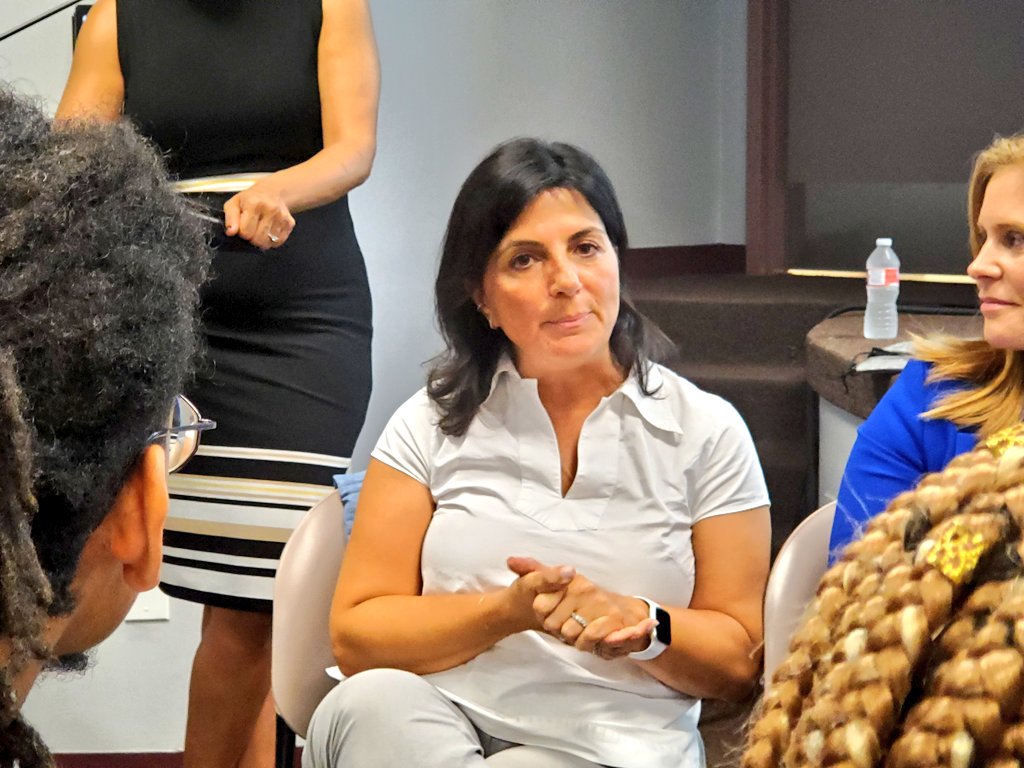 Top ABC News executive Barbara Fedida (pictured, credit School of Communication at Texas Southern University) was placed on leave Saturday to allow the company time to investigate reports that she repeatedly used insensitive, racist and abusive language while addressing staff,” Samson Amore reported for The Wrap.
Top ABC News executive Barbara Fedida (pictured, credit School of Communication at Texas Southern University) was placed on leave Saturday to allow the company time to investigate reports that she repeatedly used insensitive, racist and abusive language while addressing staff,” Samson Amore reported for The Wrap.
“Fedida is ABC’s senior vice president for talent, editorial strategy and business affairs. The ABC website says her wide-ranging responsibilities include ‘developing and executing ABC News’ strategic vision and planning for the next generation of both on-air and off-air talent,’ which also includes hiring and placing ABC anchors and correspondents worldwide.
The report followed an investigation published Saturday by Yashar Ali for HuffPost.
“In more than a dozen interviews, sources who spoke with HuffPost said Fedida, despite overseeing ABC’s diversity and inclusion efforts, appeared to have a clear distaste for the efforts and would often develop animus toward staffers or talent who tried to champion the efforts, including staffers she put in charge of improving diversity and inclusion. . . “
Ali also wrote, “In response to a list of 28 fact-checking questions, ABC News said: ‘There are deeply disturbing allegations in this story that we need to investigate, and we have placed Barbara Fedida on administrative leave while we conduct a thorough and complete investigation. These allegations do not represent the values and culture of ABC News, where we strive to make everyone feel respected in a thriving, diverse and inclusive workplace. . . .’ ”
The story also said, a “group of Black journalists at ABC News gathered on a conference call with [ABC News President James] Goldston and Fedida last Thursday to express frustration with coverage around the reaction to the police killing of George Floyd and with ABC’s efforts toward inclusion of black candidates for positions within the network, according to two sources who were on the call and another source who heard about it afterward. . . .”
In statement Saturday, the National Association of Black Journalists said, “We call for ABC News/Disney to immediately launch a transparent, external investigation led by a diverse law firm to examine all of the allegations detailed in the report, while conducting a thorough review of ABC News Executive Barbara Fedida, and the talent department that she has run at ABC News. . . .”
NABJ added:
- “We demand that there be immediate redress for those who have been wronged
- “We want an African American to be put in charge of the network’s diversity-in-hiring program
- “ABC News/Disney must hire an outside consultant to assess the culture, work environment and policies at ABC News. . . .”
Cop Allegedly Urged Burning Hannah-Jones House
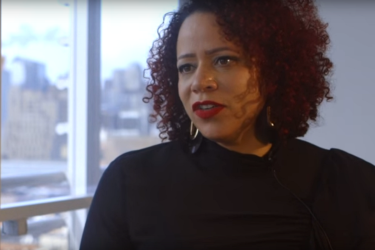 A New Orleans police sergeant was decommissioned and suspended Friday after racist social media posts made to a social media account under the same name as the officer, Chris McCrory reported Friday for WWL-TV.
A New Orleans police sergeant was decommissioned and suspended Friday after racist social media posts made to a social media account under the same name as the officer, Chris McCrory reported Friday for WWL-TV.
“Sgt. Anthony Edenfield, a homicide detective, was stripped of all police powers and decommissioned pending the outcome of an internal investigation into his social media use, according to a statement released by NOPD Superintendent Shaun Ferguson.
One comment “was in response to New York Times writer Nikole Hannah-Jones’ assertion that ‘destroying property, which can be replaced, is not violence.’ ‘Burn down her house,’ the comment, attributed to Edenfield, said. ‘Blow up her car and see if she still feels the same way.’ . . .”
Delaware Police Detain Photographer at Protest
“ A staff photographer/reporter for the USA TODAY Network was taken into custody by Delaware State Police on Tuesday night while covering a protest near the state’s capital,” Ira Porter, Jordan Culver and John Bacon reported Tuesday, updated Wednesday, for USA Today.
A staff photographer/reporter for the USA TODAY Network was taken into custody by Delaware State Police on Tuesday night while covering a protest near the state’s capital,” Ira Porter, Jordan Culver and John Bacon reported Tuesday, updated Wednesday, for USA Today.
“Andre Lamar (pictured), who has covered several demonstrations for The Dover Post since the death of George Floyd, was filming a Facebook Live he was taken into custody. He was released more than an hour later without being charged.
“The protesters are seen on the ground with their hands [behind] their backs, their signs nearby. Lamar can be heard on the video saying, ‘The police have arrested protesters. We don’t know why they arrested them. They slammed them to the ground.’
“He is heard asking officers repeatedly why they were being arrested. Then he filmed himself being tackled and taken into custody.
“His camera is turned upside down and Lamar can be heard screaming, ‘I’m with the press!’ multiple times as police placed him on the ground. He is later heard saying that he can’t breathe.
“The video is a little more than two minutes long and ends with officers confiscating his press badge and a camera bag. Lamar said he was handcuffed to a wall in a waiting area inside the state police barracks and then taken to a cell before being released. Lamar said while he was treated well – police gave him a chocolate chip cookie and water – the whole incident ‘disgusted’ him. . . .
“Delaware Gov. John Carney denounced police actions. . . .”
- Associated Press: Black Man’s Violent Death In Police Custody Was Filmed For ‘Live PD,’ Prosecutor Says, and Austin (Texas) American-Statesman: Police body-cam footage: Javier Ambler’s fatal encounter with Williamson County Sheriff’s deputies (video)
- Allyson Chiu, Washington Post: Tucker Carlson says protests are ‘definitely not about black lives,’ prompting backlash
- David Folkenflik, NPR: Journalists Clash With Newsroom Chiefs Over Protest Coverage
- Fund for Investigative Journalism: Fund for Investigative Journalism Announces Emergency Grants for Coverage of Police Misconduct
- Bryan Llenas, as told to Michael Depp, TVNewsCheck: Amid Protestors, Police And Looters, A Fox News Reporter Finds Moments Of Authenticity
- Wesley Lowery, the Atlantic: Why Minneapolis Was the Breaking Point
- Gregory L. Moore, Colorado Sun: Police and black folks — the swagger and disrespect must end (June 1)
- National Association of Hispanic Journalists: NAHJ Asks for Investigations into Abuse of Power and Racial Profiling of Latino Journalists (June 2)
- Will Sutton, NOLA.com: ‘All Lives Matter’ is offensive, exclusive and wrong. Let me explain why.
Harper’s Bazaar Gets First Black Top Editor
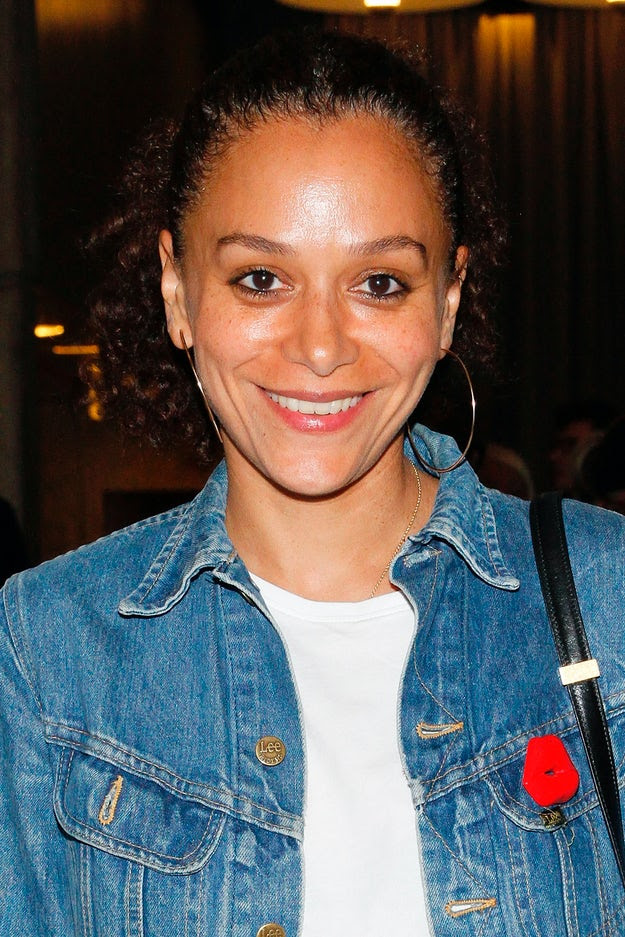 “Samira Nasr (pictured) is the next editor in chief of the American edition of Harper’s Bazaar magazine, overseeing both print and digital as of July 6,” Chantal Fernandez wrote Tuesday for the Business of Fashion. “She succeeds Glenda Bailey, who stepped down from the Hearst title in January after 19 years in the role.
“Samira Nasr (pictured) is the next editor in chief of the American edition of Harper’s Bazaar magazine, overseeing both print and digital as of July 6,” Chantal Fernandez wrote Tuesday for the Business of Fashion. “She succeeds Glenda Bailey, who stepped down from the Hearst title in January after 19 years in the role.
“Originally from Montreal, Nasr is currently the executive fashion director at Vanity Fair and has spent her decades-long career as a stylist and editor working in and around fashion magazines in New York.
“Nasr’s appointment also marks the first time a black editor will lead Harper’s Bazaar, the oldest continuously published fashion magazine in the country, a milestone in an industry where there is little if any diversity in the highest levels of leadership. . . .”
” ‘As the proud daughter of a Lebanese father and Trinidadian mother, my world view is expansive and is anchored in the belief that representation matters,’ said Nasr in a video announcing her appointment. ‘My lens by nature is colourful and so it is important to me to begin a new chapter in Bazaar’s history by shining a light on all individuals who I believe are the inspiring voices of our time. I will work to give all voices a platform to tell stories that would never have been told.’ . . .”
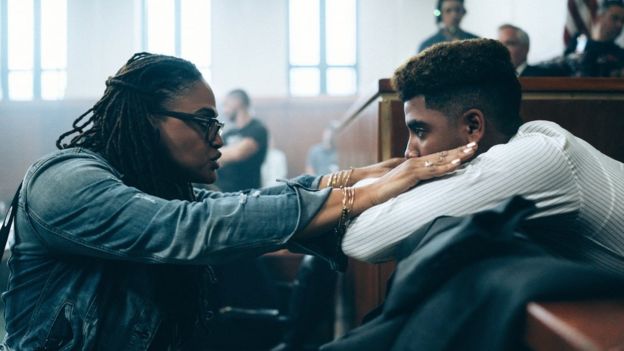
Peabody Winners Focus on Race, Criminal Justice
“The Peabody Awards has named Watchmen, Dickinson, Stranger Things and When They See Us among this year’s winners,” Hilary Lewis wrote Wednesday for the Hollywood Reporter.
Lewis also wrote, “Although judged earlier this spring, seven of this year’s winners focus on racial issues within the criminal justice system, including True Justice, When They See Us, Watchmen and podcast In The Dark: The Path Home. Other winners that tackle police problems include Unbelievable, Unwarranted and A Different Kind of Force: Policing Mental Illness .”
Among the winners:
- “Long Island Divided”: “This three-year-long investigation of housing discrimination and its impact on Long Island’s suburban towns and communities is local investigative journalism at its best. . . .” (Newsday)
- “The Hidden Workforce: Undocumented in America”: “This revealing look at undocumented workers in the United States takes the focus away from the border and places us instead in the American Midwest to show how vital immigrants have become to the heartland — humanizing them and their contributions to the social, economic, and cultural fabric of the nation.” (CNN)
- “Unwarranted”: “Investigative reporter Dave Savini spent a year reporting on botched police raids in the Chicago area that left behind traumatized families and trashed homes. . . .” (WBBM-TV, Chicago)
- “Surviving R. Kelly“: “This explosive six-part series, based on interviews with women who survived alleged sexual abuse from R&B superstar R. Kelly, chronicles the complicity of a music industry and fans who turned a blind eye to multiple allegations as the singer rose to staggering heights of fame. . . . ” (Lifetime)
- “The Edge of Democracy”:”Telling the epic tragedy of what happened in Brazil, from Lula to Bolsonaro, this film from director Petra Costa commandingly and chillingly shows how precarious a democracy can be.” (Netflix)
- “When They See Us”: “Devastating and commanding, Ava DuVernay’s powerful miniseries about the Central Park Five case and the lives it ruined is a touchstone for its historical moment, and a powerful registry of the inhuman practices and degrading effects of 20th-century racial injustice and state violence.” (Netflix)
- “True Justice: Bryan Stevenson’s Fight for Equality”: “A profile of attorney Bryan Stevenson and his work at the Equal Justice Initiative seeking justice for the incarcerated poor and death row inmates in Alabama and other Southern states, the film offers a searing indictment of the court system, and helps viewers see how the U.S. Supreme Court is historically and directly accountable for sustaining racial violence, white supremacy, and the exploitation of black people through the trajectory of decisions that leads from enslavement to lynching to the death penalty.” (HBO)
Short Takes
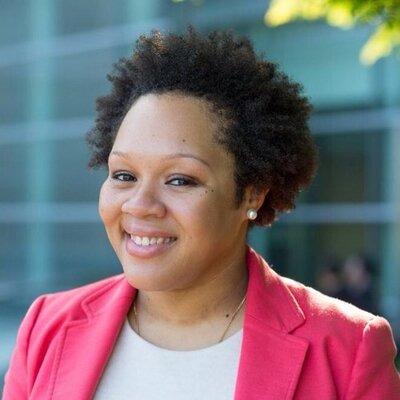 The White House Correspondents’ Association chose Yamiche Alcindor (pictured), White House correspondent for the “PBS NewsHour,” for its Aldo Beckman Award for Overall Excellence in White House Coverage, the association announced this week. In addition, Alcindor contracted to write a memoir for Ballantine Books. The book will show “how the precise path Alcindor took — as the child of Haitian immigrants and as a journalism prodigy covering Black Lives Matter and civil rights abuses — informs her point of view while reporting on one of the most chaotic administrations in modern times,” Ballantine said.
The White House Correspondents’ Association chose Yamiche Alcindor (pictured), White House correspondent for the “PBS NewsHour,” for its Aldo Beckman Award for Overall Excellence in White House Coverage, the association announced this week. In addition, Alcindor contracted to write a memoir for Ballantine Books. The book will show “how the precise path Alcindor took — as the child of Haitian immigrants and as a journalism prodigy covering Black Lives Matter and civil rights abuses — informs her point of view while reporting on one of the most chaotic administrations in modern times,” Ballantine said.
- ”Are Hispanic journalists discriminated against? Fundamedios is conducting an investigation into the main challenges facing Hispanic journalists in the United States,” the freedom of expression organization said.
- ”The Native American Journalists Association will host the 2021 National Native Media Conference Sept. 15-19, 2021, in Phoenix,” the organization announced June 5. In May, NAJA postponed the 2020 National Native Media Conference in response to the COVID-19 pandemic.
- “For the coming academic year, we are turning our Knight-Wallace Fellowship model outward, to fund long-term reporting projects examining momentous challenges and responses in this year of converging crises,” the University of Michigan fellowship program announced Thursday. “We’ll select a cohort of ten accomplished journalists with different backgrounds and experience . . . Selected Fellows will not be required to leave their news organizations or places of work. . . .”
- After a week, a petition calling for the resignation of Hampton University President William R. Harvey had gathered more than 7,700 signatures on Change.org Saturday. “We acknowledge that Hampton University has grown tremendously in the 42 years that William R. Harvey has served as President,” says the petition, HBCUBuzz reported June 6. “He is recognized as the longest-serving tenured HBCU President in history. Unfortunately, this is reflected in the several outdated practices and ‘standards’ that affect students. . . .” Hampton hosts the Scripps Howard School of Journalism and Communications.
- “To get intel on activists and organizers, including those in the Black Lives Matter movement,” a white sergeant with the Memphis Police Department “posed on Facebook as a ‘man of color,’ befriending people and trying to infiltrate closed circles,” Memphis journalist Wendi C. Thomas wrote for ProPublica Tuesday. Thomas said that she was one of those befriended by Sgt. Timothy Reynolds. “Law enforcement also was keeping tabs on three other journalists whose names came out during the trial,” Thomas wrote, without naming the journalists. “Reynolds testified he used the fake account to monitor protest activity and follow current events connected to Black Lives Matter.” Judge Jon P. McCalla of U.S. District Court for the Western District of Tennessee ruled in 2018 that Reynolds had violated a 1978 consent decree barring surveillance of residents for political purposes.
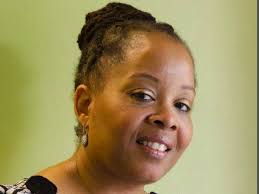 Marcia Davis (pictured), a former editor at the Washington Post and the Marshall Project, is joining NPR as supervising editor of race and identity, NPR announced Wednesday. “Marcia will edit coverage of race and identity from the National Desk, leading a team of reporters and coordinating with desks and shows. She will serve as a liaison with the Code Switch team, working to facilitate seamless coverage of race, inclusion and diversity throughout our newsroom and the broader network of member stations,” the announcement said.
Marcia Davis (pictured), a former editor at the Washington Post and the Marshall Project, is joining NPR as supervising editor of race and identity, NPR announced Wednesday. “Marcia will edit coverage of race and identity from the National Desk, leading a team of reporters and coordinating with desks and shows. She will serve as a liaison with the Code Switch team, working to facilitate seamless coverage of race, inclusion and diversity throughout our newsroom and the broader network of member stations,” the announcement said.
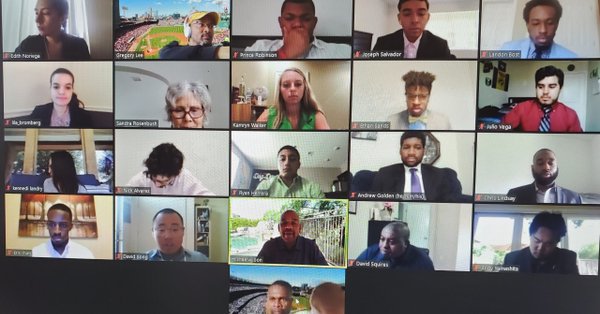
- ”The 2020 edition of the Sports Journalism Institute’s annual ‘boot camp’ was unlike anything the institute’s previous 27 classes experienced,” the institute, which trains potential sports journalists with an eye toward diversity, reported Tuesday. “Because of concerns surrounding the COVID-19 pandemic, this boot camp was a virtual experience, with classes, chats and even orientation, . . . all online, via zoom.” Leon Carter, co-founder/co-director of SJI and a vice president at ESPN, messaged Journal-isms, “We put together an action packed boot camp with deadline assignments and great speakers such as Michael Wilbon, coach Herm Edwards, Soraya McDonald, Garry Howard and Stephen A. Smith. Plus lectures from me, David Squires and Malcolm Moran and two faculty members of Arizona State’s Cronkite School of Journalism. . . .” The camp took place the week of June 1.
- The New York Times’ decision to declare that it should not have published a controversial essay by Sen.Tom Cotton, R-Ark., “was wrong,” Steven A. Holmes wrote Wednesday for CNN. “It sends a chilling signal to future contributors that the paper is willing to play fast and loose with its commitment to making its op-ed page a marketplace for ideas. . . . [T]he reasons the paper gives for its decision are so facile as to make its actions smack of journalistic cowardice,” wrote Holmes, who formerly worked at the Times, Time magazine, the Washington Post and CNN, where he was executive director, Office of Standards and Practices. Cotton’s essay called for U.S. troops to be sent into cities to quell rioting that had erupted in the wake of the killing of George Floyd by police.
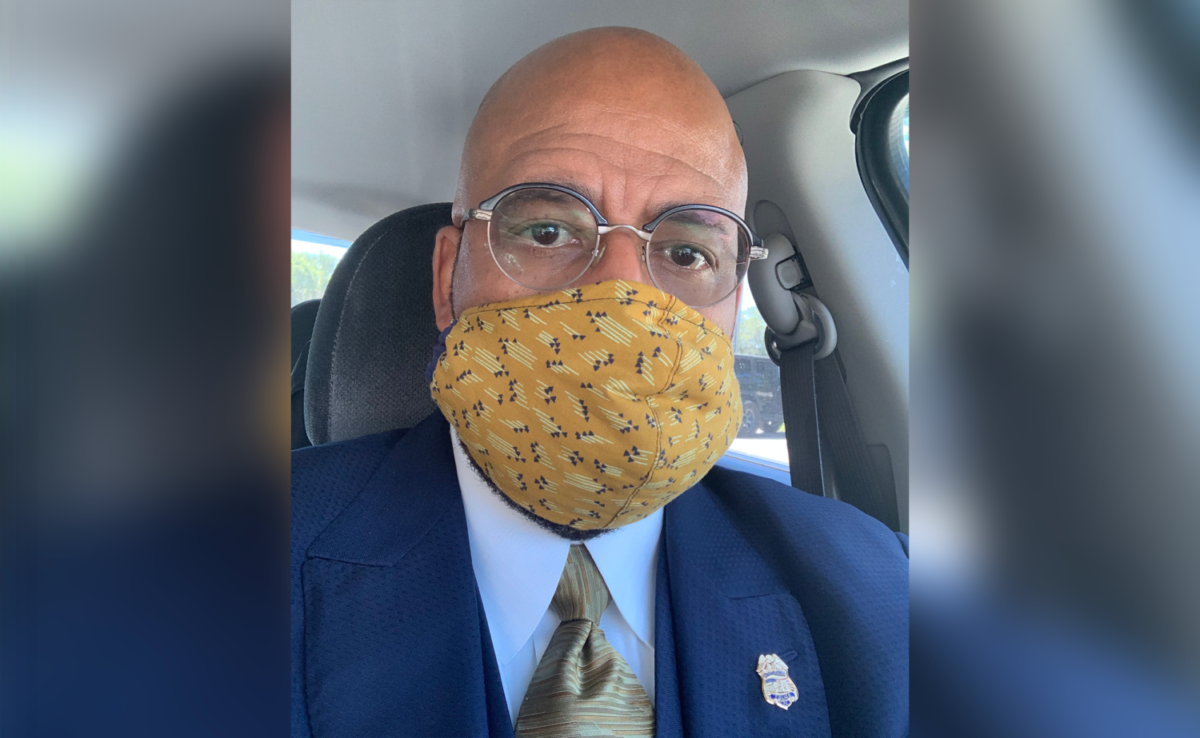 ”My recommendations to journalists covering conflict have been greatly affirmed . . .,” the Rev. Kenny Irby (pictured), photojournalist, pastor and the first director of community intervention and juvenile outreach for the police department in St. Petersburg, Fla., said in an interview Wednesday with Roy Peter Clark of the Poynter Institute. “I still say: Do your research, be aware of your surroundings, travel with an accountability partner — someone to watch your back — park your vehicle away from the epicenter of the protest and travel light. I must say that I honor the courage of those attempting to bear witness to the news for the greater good of informing others. . . .”
”My recommendations to journalists covering conflict have been greatly affirmed . . .,” the Rev. Kenny Irby (pictured), photojournalist, pastor and the first director of community intervention and juvenile outreach for the police department in St. Petersburg, Fla., said in an interview Wednesday with Roy Peter Clark of the Poynter Institute. “I still say: Do your research, be aware of your surroundings, travel with an accountability partner — someone to watch your back — park your vehicle away from the epicenter of the protest and travel light. I must say that I honor the courage of those attempting to bear witness to the news for the greater good of informing others. . . .”
- In Newark, N.J., the “city school system is creating a new curriculum centered on African American history that will teach students not only how the country has oppressed black people, but also how black Americans helped build this nation through their labor, artistry, and ongoing struggle for equality,” Patrick Wall wrote Tuesday for Newark Chalkbeat. Wall also wrote, “Newark advocates have long demanded that schools devote more class time to African American studies, arguing that it is vital for all students’ understanding of U.S. history and for black students’ pride in their heritage. The district has previously created teaching guides about African American history, but critics say they were often ignored or relegated to standalone courses rather than integrated into all social studies classes. . . .”
Facebook users: “Like” “Richard Prince’s Journal-isms” on Facebook.
Follow Richard Prince on Twitter @princeeditor
Richard Prince’s Journal-isms originates from Washington. It began in print before most of us knew what the internet was, and it would like to be referred to as a “column.” Any views expressed in the column are those of the person or organization quoted and not those of any other entity. Send tips, comments and concerns to Richard Prince at journal-isms-owner@yahoogroups.com
View previous columns (after Feb. 13, 2016).
- Diversity’s Greatest Hits, 2018 (Jan. 4, 2019)
- Book Notes: Is Taking a Knee Really All That? (Dec. 20, 2018)
- Book Notes: Challenging ’45’ and Proudly Telling the Story (Dec. 18, 2018)
- Book Notes: Get Down With the Legends! (Dec. 11, 2018)
- Journalist Richard Prince w/Joe Madison (Sirius XM, April 18, 2018) (podcast)
- Richard Prince (journalist) (Wikipedia entry)
- February 2018 Podcast: Richard “Dick” Prince on the need for newsroom diversity (Gabriel Greschler, Student Press Law Center, Feb. 26, 2018)
- Diversity’s Greatest Hits, 2017 — Where Will They Take Us in the Year Ahead?
- Book Notes: Best Sellers, Uncovered Treasures, Overlooked History (Dec. 19, 2017)
- An advocate for diversity in the media is still pressing for representation, (Courtland Milloy, Washington Post, Nov. 28, 2017)
- Morgan Global Journalism Review: Journal-isms Journeys On (Aug. 31, 2017)
- Diversity’s Greatest Hits, 2016
- Book Notes: 16 Writers Dish About ‘Chelle,’ the First Lady
- Book Notes: From Coretta to Barack, and in Search of the Godfather
- Journal-isms’ Richard Prince Wants Your Ideas (FishbowlDC, Feb. 26, 2016)
- “JOURNAL-ISMS” IS LATEST TO BEAR BRUNT OF INDUSTRY’S ECONOMIC WOES (Feb. 19, 2016)
- Richard Prince with Charlayne Hunter-Gault,“PBS NewsHour,” “What stagnant diversity means for America’s newsrooms” (Dec. 15, 2015)
- Book Notes: Journalists Follow Their Passions
- Book Notes: Journalists Who Rocked Their World
- Book Notes: Hands Up! Read This!
- Book Notes: New Cosby Bio Looks Like a Best-Seller
- Journo-diversity advocate turns attention to Ezra Klein project (Erik Wemple, Washington Post, March 5, 2014)

